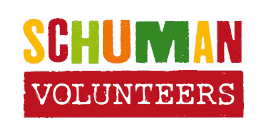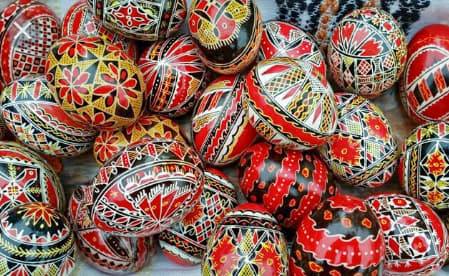Around 86% of Romanians are of Orthodox confession and Easter (or the Resurrection) is one of the most important religious holidays in the country.
That’s because the holiday celebrates Jesus’ Resurrection from death three days after he was executed by crucifixion, as narrated in the Christian bible. Romania’s Easter holiday follows the Orthodox Easter date, which is often different from the Easter date established by other Christian churches. The date changes from year to year, but the holiday is always celebrated on a Sunday.
Easter in Romania has a sacred quality, as it is firmly rooted in religion, with most of the associated traditions being of Orthodox origin. The traditions surrounding Easter are pretty complex and held special meaning in the hearts of most Romanians. Here’s a roundup of some of the most significant ones:
Florii (Palm Sunday)
One week before Easter, people with flower names arecelebrated (hence the name of the holiday; the English equivalent of Florii is Flower Day). During this day, willow branches are taken into the church to be blessed. Then, people put them in front of icons and above doors to ward off evil spirits and protect them all year long.
Painting Boiled eggs
This takes place on the Thursday before Easter (also known as the Holy Thursday). The traditional color to dye the eggs with is red which symbolizes Jesus’ blood when he was crucified. However, nowadays, a wide array of colors and decorations are used. Yet, natural coloring methods, such as boiling the eggs in water with red onion skins or beetroot, are still being used, mostly in rural Romania.
Romania is famous for its artists who hand-paint empty eggshells in different geometrical and floral motives, an art form which has been passed down from generation to generation. Another ancient local tradition (mainly from northern Bucovina) on Easter eggs involves adorning the eggs with beads to create intricate, colorful patternas.
Some who still keep the tradition alive, use an instrument called “chisita” (a sharp peak made of sheet-metal, fixed on the tip of flat stick). Nowadays is used also the nib. The handicraft of eggs decoration is related to the embroidery. The Easter night’s traditions and the decorations that are found on the national costumes transform a common thing into a beautiful art. The eggs are painted in three or four colors, usually taking into account the symbol behind it. The chromatic of the painted eggs makes the difference between the main areas where this handicraft is done.
Attend Church on Easter Saturday
Millions of Romanians put on festive clothes and attend the midnight service at the church. A few minutes after the clock strikes midnight, all the lights in the Church are turned off.
At midnight, the priest comes out of the altar with a lit candle and “gives the light” to the whole congregation. Each member will pass the light to the next until everyone’s candles are lit. This represents the risen Christ, as a symbol of light (life) dismissing darkness (death). With candles in their hands, Christians then circle the church three times led by the priest.
Knocking Dyed Eggs Together End-to-End
It is customary for people to knock eggs during Easter. While the two eggs are cracked together, one person says “Christ is risen” to which the other person responds with “Indeed is risen“. The person who manages to crack the other person’s egg on both ends is considered to be the winner.
The Easter lent is the longest of all four main lent periods in Romania and lasts for forty days plus the week before Easter. During this time, people give up meat and dairy products almost entirely There is a variety of traditional Easter food which most of Romanians enjoy after such a long period of fasting. Some of the most popular dishes are:
Roast lamb steak. Usually served with spring roasted vegetable, such as carrots, green beans, potatoes and green peas.
Drob. A lamb organs’ haggis with vegetables and boiled-eggs center.
Traditional sponge cake (cozonac). A delicious sweet bread typically filled with walnuts and cocoa. Goes great with a glass of milk, but it’s delicious by itself, as well.
Pasca: A special kind of pastry with a sweet cheese filling and sometimes raisins – perfect for dessert.
Red wine. There’s nothing which accompanies lamb stake better than a chilled glass of red wine, especially if it’s produced locally by villagers or by one of the iconic wineries in Romania.
Other foods many Romanians eat on Easter are the famous sarmale (minced meat in cabbage rolls) and boeuf salad (finely chopped beef or chicken mixed in with root vegetables, mayonnaise and pickles.
One more custom you will enjoy is witnessing villagers put on traditional clothing – some of which has been in their families for generations. This custom is mainly kept alive in the countryside.
No matter where the Easter finds you this year and how you choose to celebrate, I wish it brings you the greatest feelings of gratitude and joy!

